William Smith was a gunmaker apprenticed in 1766 to John Joyner who at the end of his career had his shop at 64 Princes Street, Soho from 1821 to 1824. The business passed to his son Samuel, who had the business from 1825. In 1830 he took out an English patent No 5978 for ‘Imperial caps and nipples’ to his own design. In 1834 he took his brother Charles into the business and it became Samuel and Charles Smith, still at 64 Princes Street Soho. In 1855 the business passed to Samuel’s sons, also Samuel and Charles, so continued to trade under the same name until 1877, although it moved to Haymarket for the last 6 years. Many of their sporting guns, rifles and pistols used the patent Imperial caps and nipples – some are now found cased with alternative conventional nipples so that common caps could be used. I do not know if Smith originally supplied them as an option, and if so whether alternative cock noses were supplied. Thus early (1831 -1834) Imperial guns would have Samuel Smith’s name alone, with the Prices Street address, for the rest of the percussion era guns would be under the name Samuel and Charles Smith (usually abbreviated as on the lock plate below.) still at the Princes Street address
I haven’t yet seen the Smith patent so I cannot comment on what was claimed to be the advantage, but it was taken out fairly early in the percussion era so maybe the ‘standard’ percussion cap wasn’t yet fully established? ( I believe it was that they needed less primer, and were easier to make, plus had a shorter path to the main charge). The distinguishing feature of the Samuel Smith’s caps and nipples is that the caps were larger in overall diameter ( about 8.5 mm ) and sat over the round body of the nipple, which had a small projection in the centre with the hole for the flame – the projection forming the ‘anvil’ on which the cap was detonated by the cock. The nipple top was flat and circular except for the raised ‘anvil’ and so gave no purchase for a conventional nipple key – they were unscrewed using a special tool that fitted over the body of the nipple and had a small (2.5mm diameter) sprung peg that engaged with a hole in the side of the nipple body. The cocks of Smiths’ guns featured a removable nose on a 7/32 x 32 t.p.i thread – this was flared towards the end, which was around 12.3 mm in diameter (1/2 inch) and was recessed about 1.5 mm (1/16th in.) over most of its end diameter. Guns seen nowadays usually have conventional nipples to replace the Imperial ones, although they do stand higher by 4 – 6 mm than the Imperial nipples. I have not seen replacement noses for the cocks for use with conventional caps ( original or modern) so I don’t know if such things existed!
When conventional nipples are mounted in Smith guns that retain the original cock nose intended for Imperial caps, the caps are not guarded by the usual skirt on the cock nose of guns intended for conventional caps. The skirt on the nose of a conventional percussion is intended to prevent shards of red hot cap being blown out onto the shooter’s face and hands (it happens!). It is possible that the Smiths’ cock noses were made detachable to allow the user to fit a safer design for conventional caps? Early on a number of makers ( Joseph Manton, Samuel Nock etc…) did use detachable noses on the cocks, possibly a relic of the pill lock days – these, of course, did have protective skirts.
The Samuel and Charles Smith gun shown below is a double 12 bore and is fairly heavy for a normal percussion sporting gun, weighing around 7 lbs. It was made without a ramrod or fittings for one, which suggests that it was made as a live pigeon gun, probably around 1840, It is one of a cased trio of identical guns, two numbered consecutively and one later, all fitted with Imperial caps and without conversion nipples. The guns are not individually numbered 1,2 and 3 as one might expect (or is it too early for that?). The numbering of the guns suggests that they were made as a pair and that the third was made later to complete the trio. It is difficult to see why anyone would want to have a set of three live pigeon guns, and that makes a case for them being game guns for driven shoots where the shooter might have had two loaders and therefore 3 guns on the go at once, or were they made before the era of massive driven shoots? As always there exists an enjoyable puzzle!
My project is to convert them to use conventional caps (reversibly and without damaging any original parts, naturally!). I will make new nipples of a squatter design that normal (modern nipples are about 1.5 mm shorter than the originals from 1840) and will also make new detachable noses for the cocks to protect the shooter from stray bits of cap.
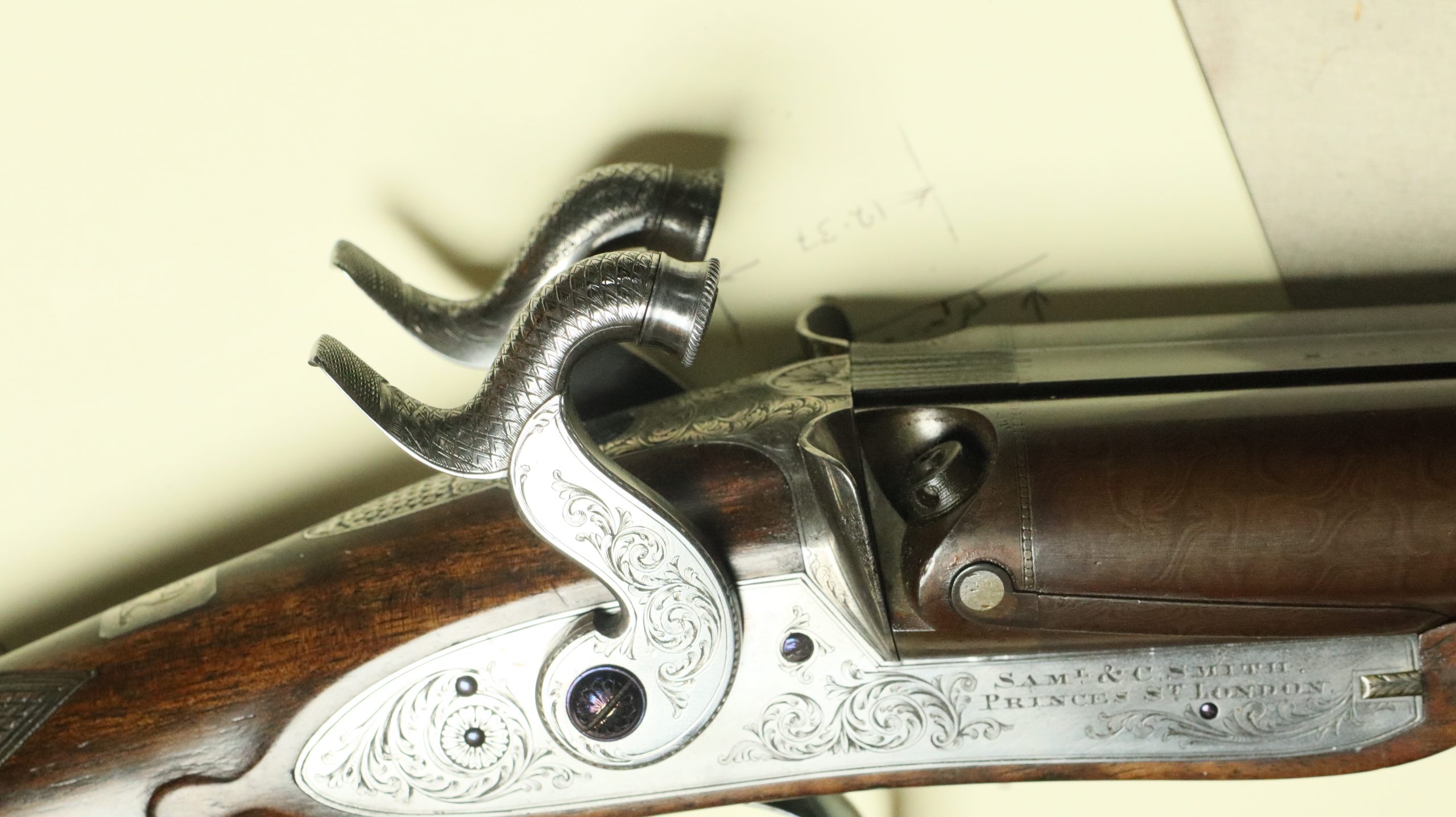 The nose on the Rt cock is my prototype nose for use with conventional caps & nipples.
The nose on the Rt cock is my prototype nose for use with conventional caps & nipples.
Here is the original tool for removing the Imperial nipples – note the spring loaded arm with the pin (approx 2.5 mm diameter) that engages with the radial hole in the nipple edge.
The tool is not particularly worn, but doesn’t fully grip one of the nipples, which I assume had had its hole damaged by trying too hard to remove it. I will try making a better design of tool – quite a challenge, although I do have a few ideas……
Here is the tool I made to get out the caps that the Smiths tool didn’t seem up to removing;-
The ‘original Smiths tool (above) didn’t grip the cap well enough as the side hole in the nipples was a little worn, and I didn’t want to damage the rather weak joint between the metal and wood of the tool. I designed a ‘foolproof’ tool that I reckoned would allow me to put much more force on the recalcitrant caps and was ‘more or less’ guaranteed not to disengage in the process. The principle is that the cup for the base of the cap is a good fit over the cap, but the shaft and end is split so that it can be opened and closed to allow a fixed peg on the inside of the cup to slip into the hole in the cap, after which the cup is closed to grip the cap by sliding a tapered collar down the split and tapered shaft of the tool. I drilled a 2.5 mm hole through the cup and used a piece of hardened steel rod to engage the hole in the nipple – one nipple had the hole facing outward so I could leave the rod sticking out for a trial – it worked, although the thread was pretty stiff even after it had started to turn – too stiff for the original tool to work without holding the sprung loaded catch. I have now silver soldered the peg into the cup and quenched it to harden it all up, and I’ll try the finished tool on the other nipple. The thread on the nipple I have removed seems to be .253 O.D. and as near as I can judge 28 t.p.i. with a very shallow rounded thread as is common on old guns. As far as I can see the best fit would be an oversize 1/4 inch U.N.F thread (28t.p.i.) rather than the 1/4 inch B.S.F thread (26 t.p.i.) I was expecting. I will cut some test threads – I have a UNF die, and if its opened up to the maximum it will probably cut a big enough thread. If not I’ll open out a die holder and run a flame down one side of the die to soften it and open it some more………………………………………………………… nothing to do with old guns is straightforward! If you want one of these tools please email me, see SHOP page at top for price etc.
I ought to have put a nipple pricker in one of the arms – …….. next time?
I cut the slot with a hacksaw, hence the wobble – I don’t have a suitable slitting saw. It works!
There is still a bit of silver solder round the pin, it has now been removed.
New nose and nipple for 1075 caps.
The nipple could be a shade smaller diameter as the cap hasn’t gone fully down.
I made a new nipple with the same radial hole as the original Imperial nipples, and discovered that the space between the body of the nipple and the flash guard isn’t enough to allow either my tool or the original tool to engage with the nipples unless the radial hole happens to be pointing outwards. I don’t think the threads and hole were all aligned so wonder how the original tool was supposed to work! Anyway it isn’t a problem for the nipples I’m making as I can make them fit a normal nipple key, which I have done in the photo above.
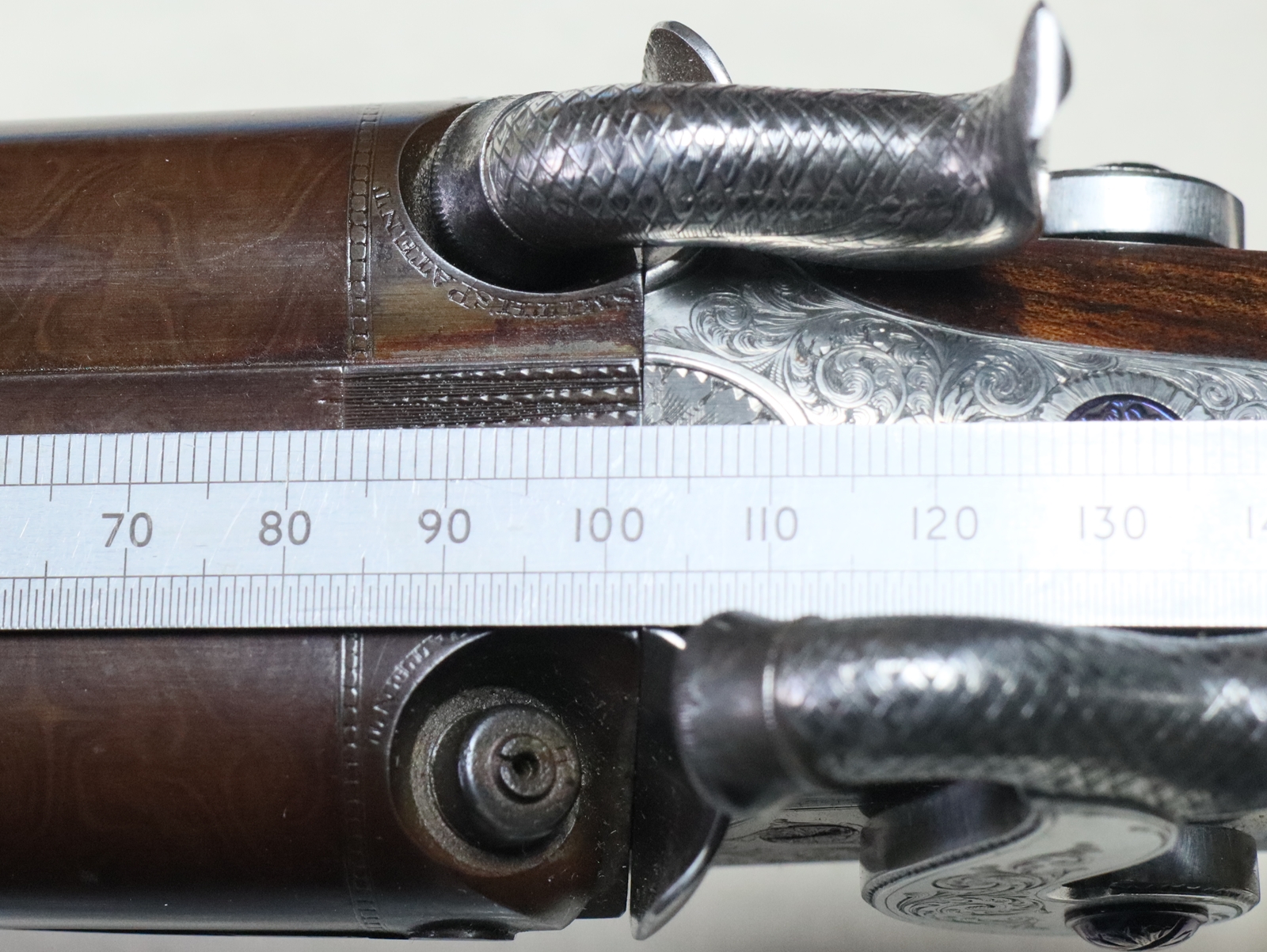
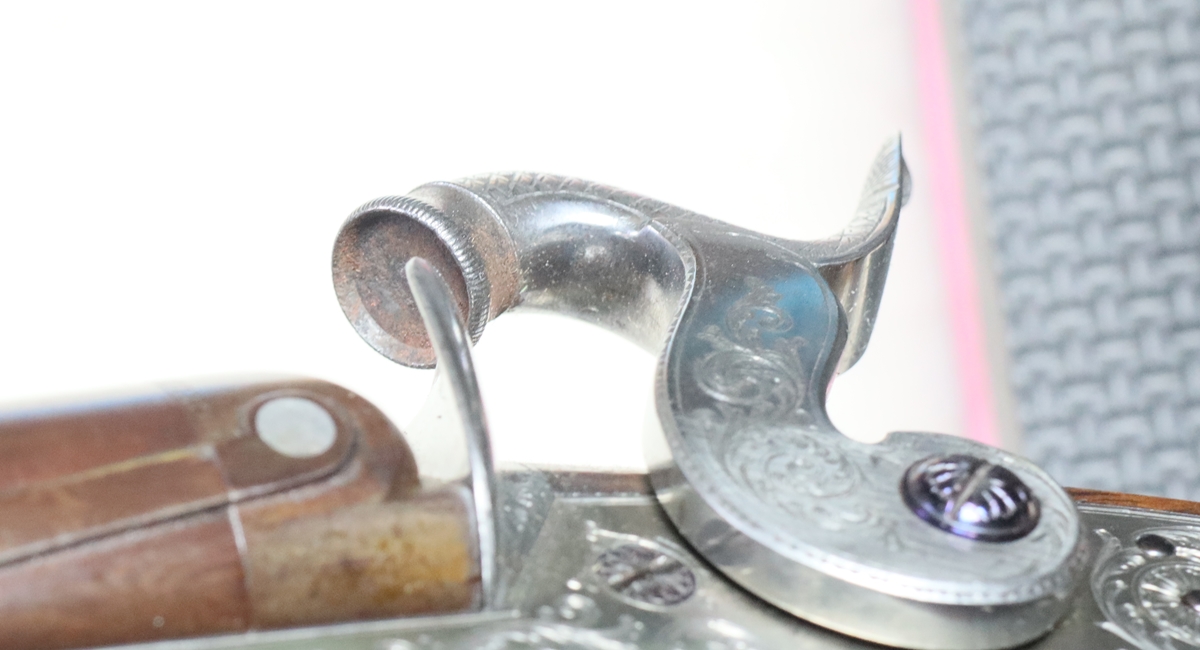


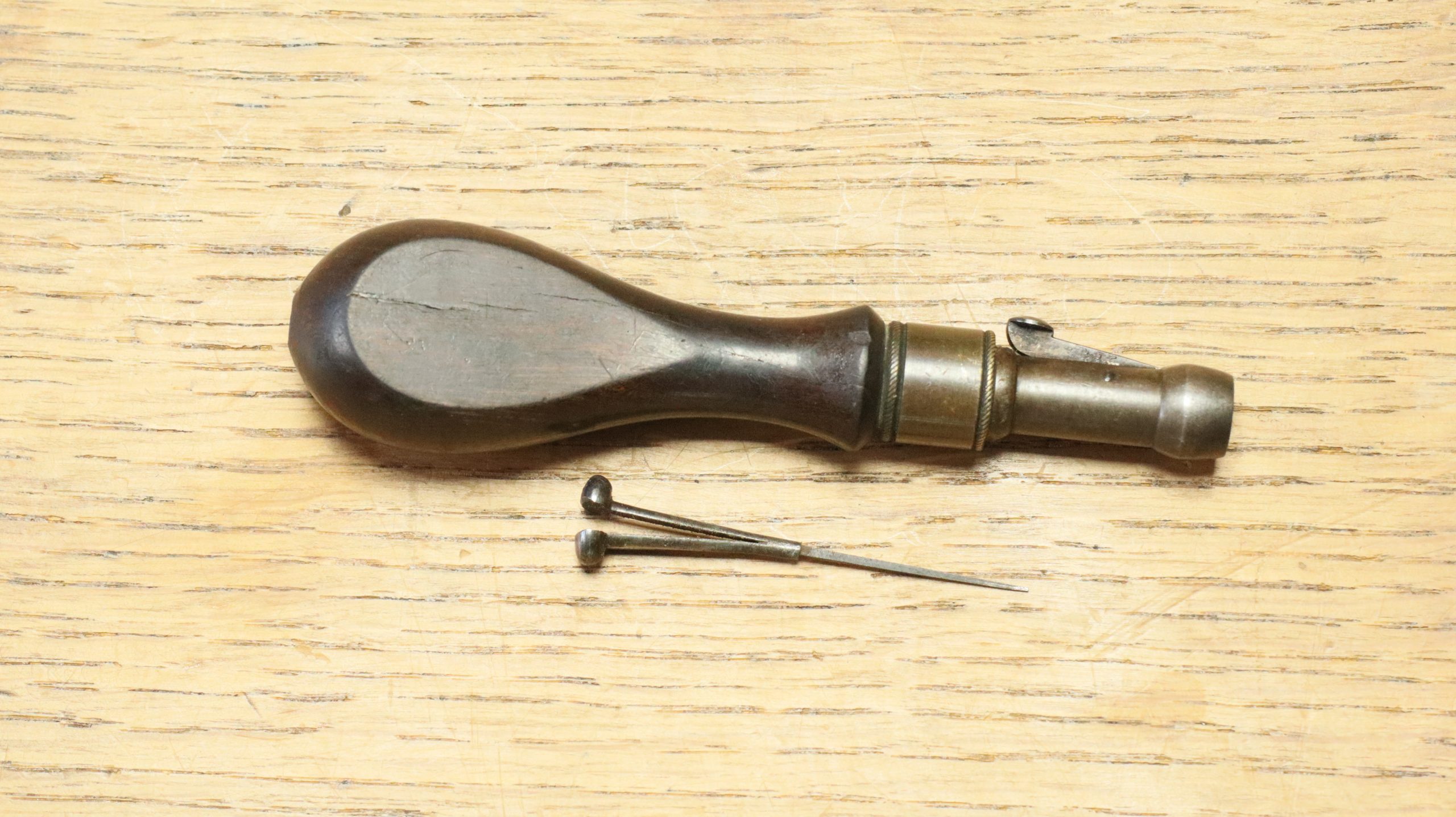
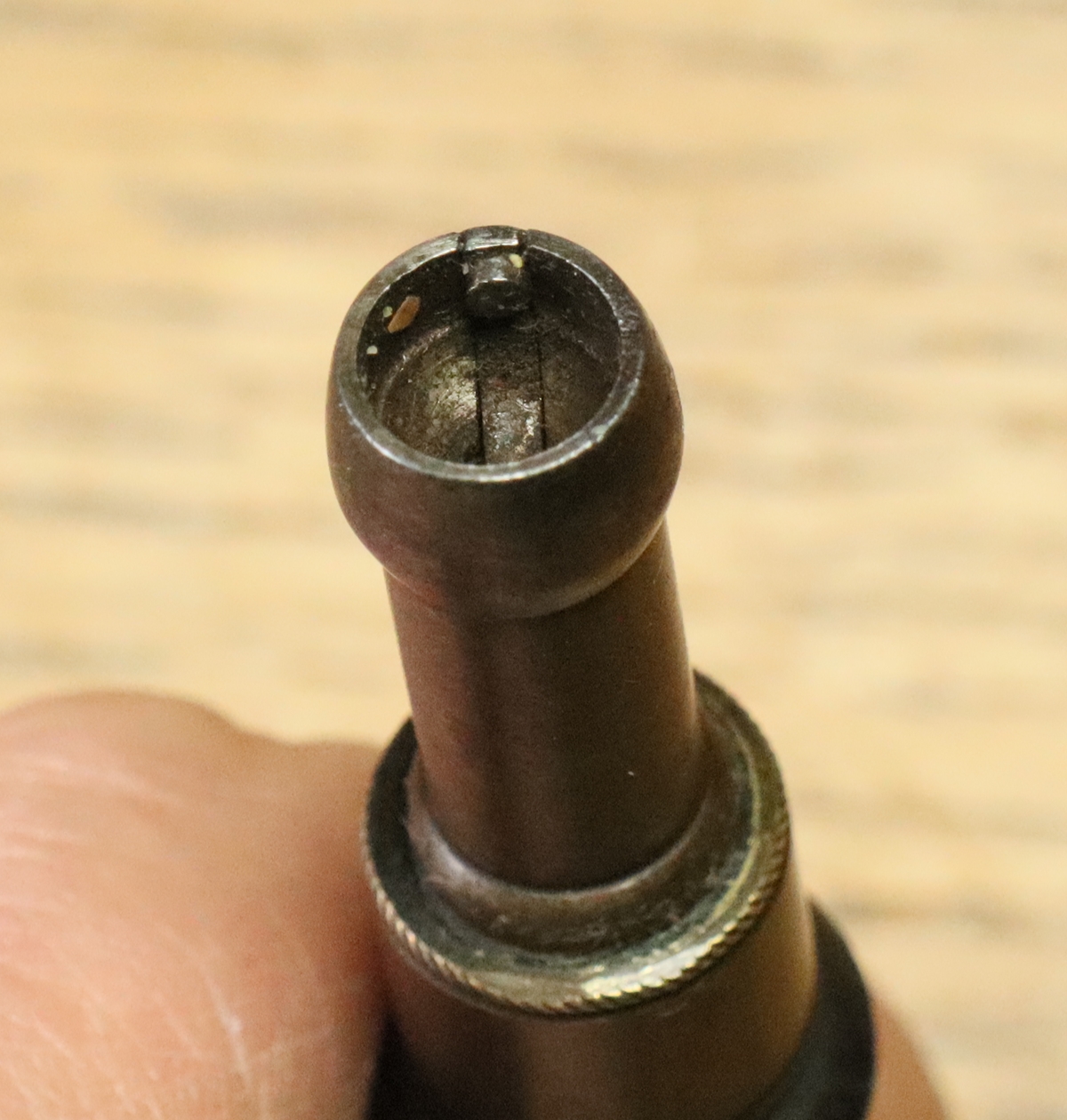
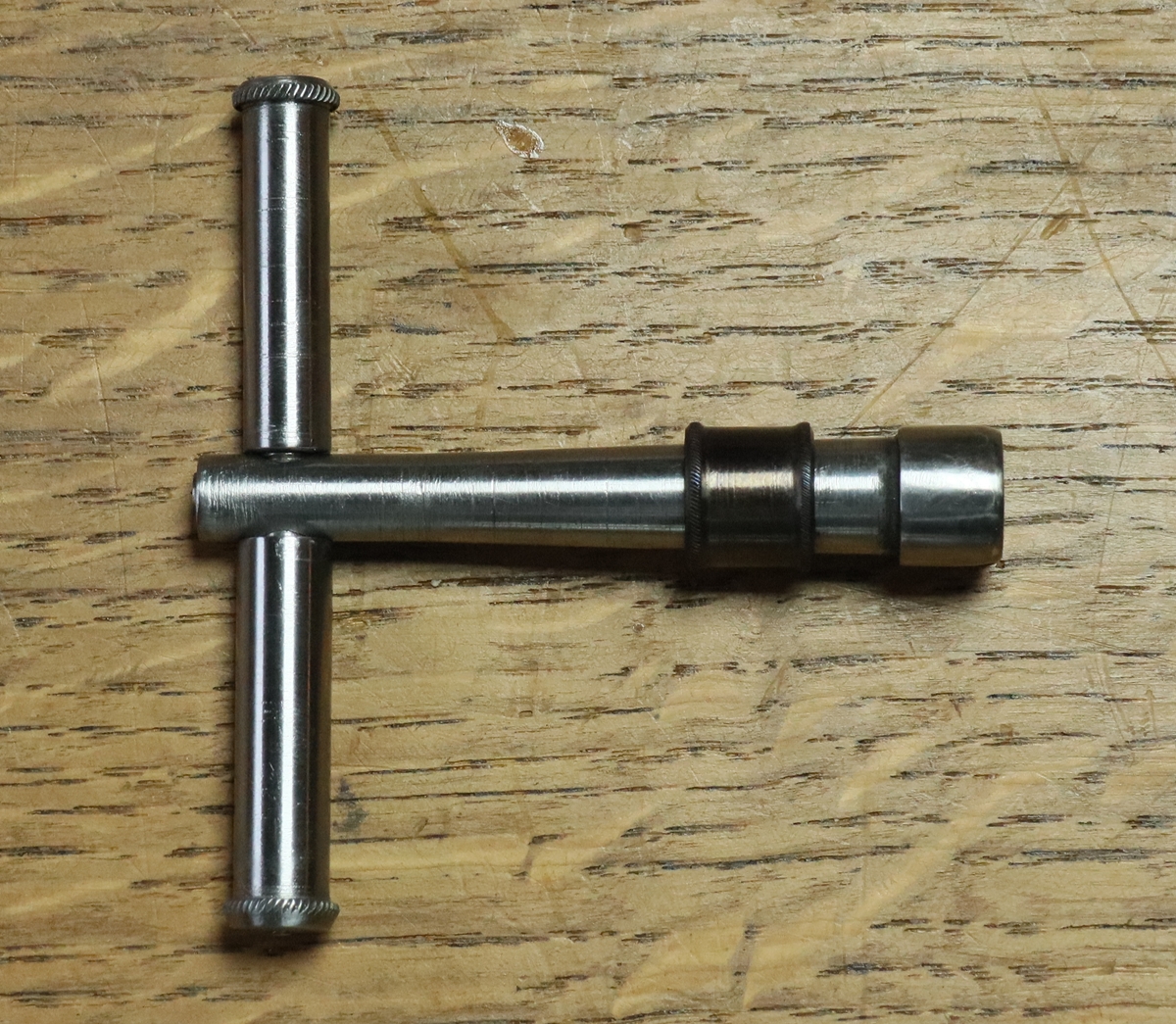
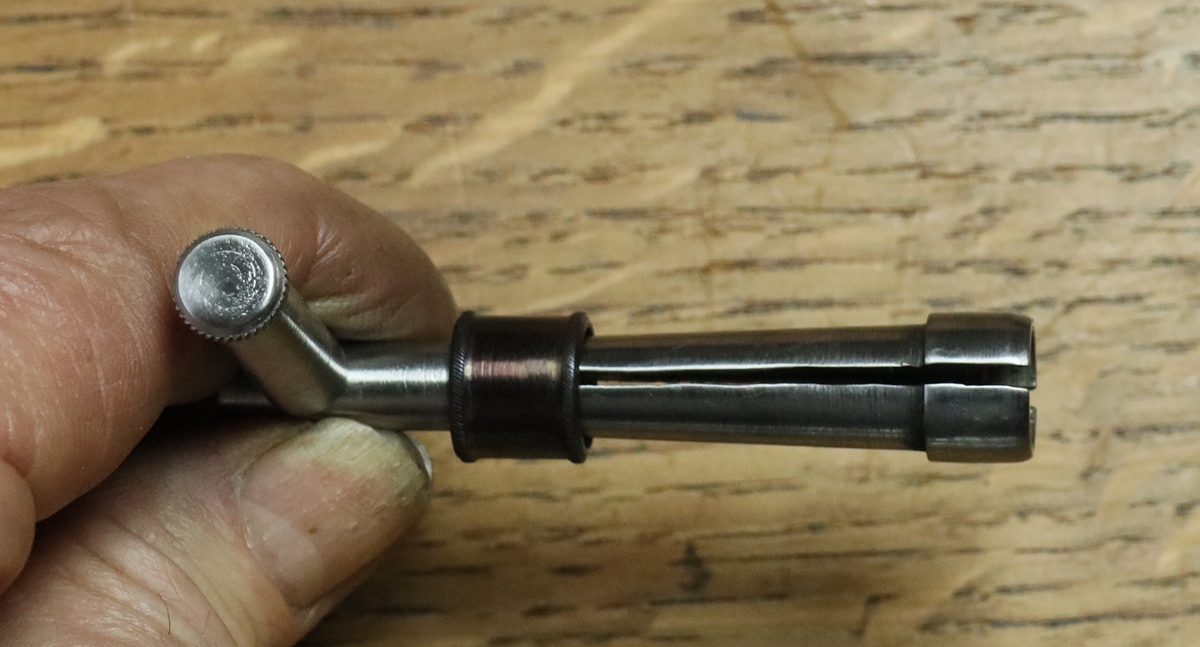
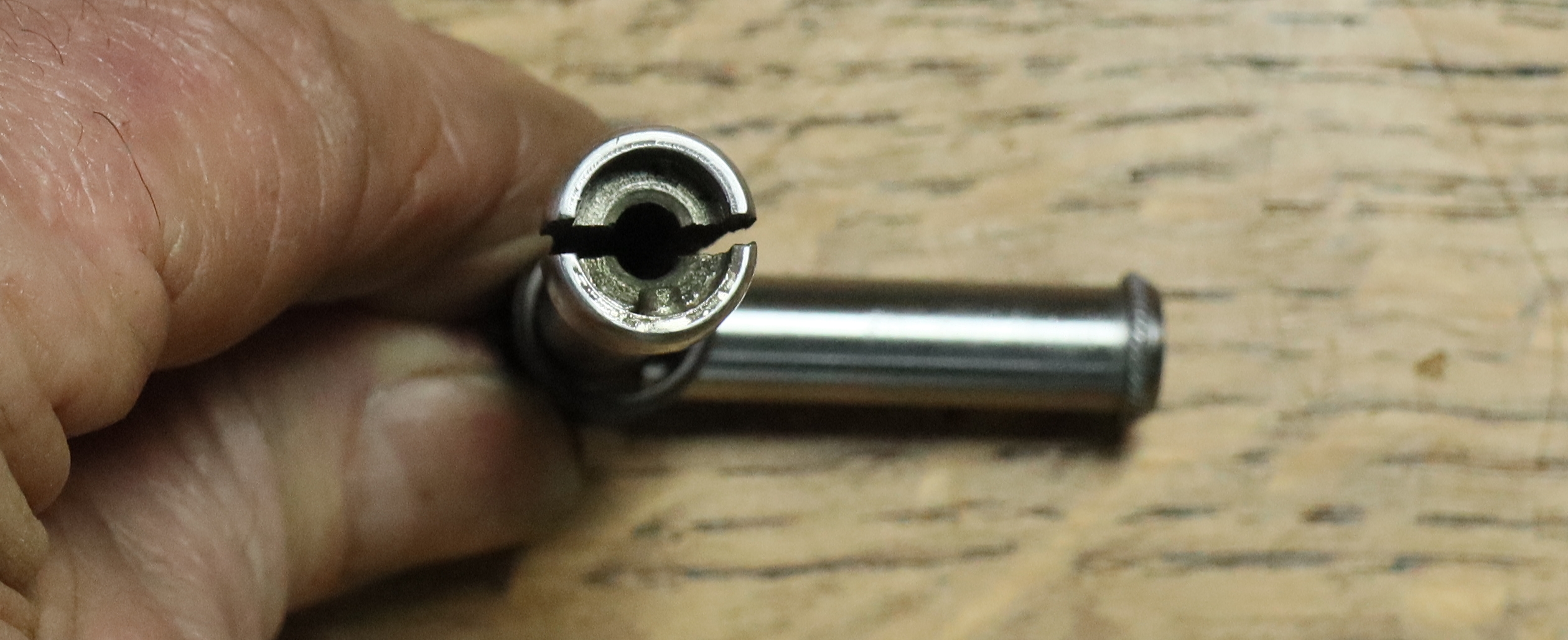
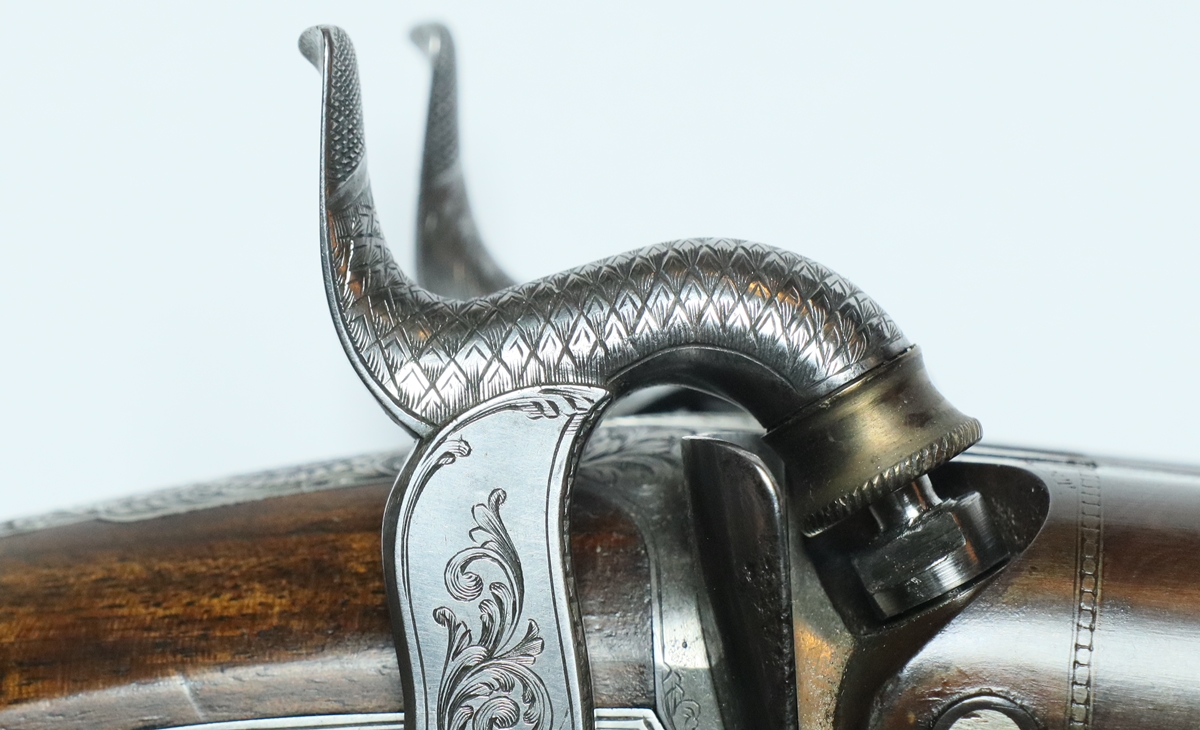
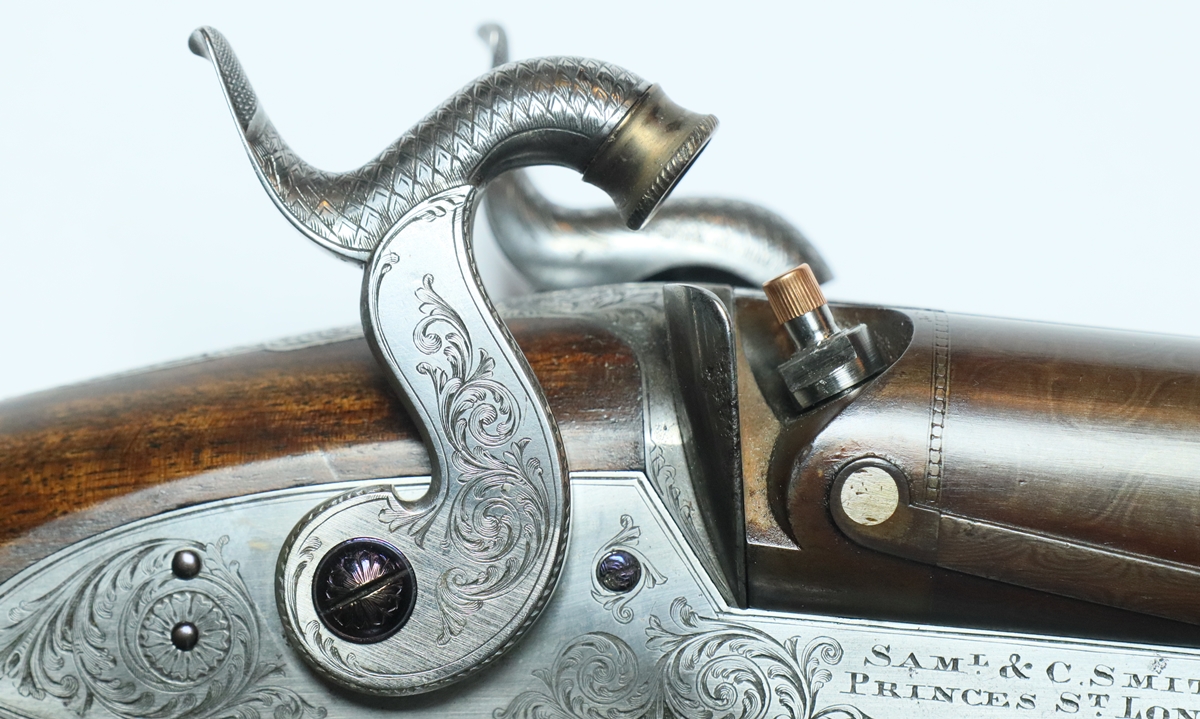
Tim
Sure enough – I have now seen pictures of a single shotgun with a solid hammer made for imperial nipple and the gun fitted with an imperial nipple so looks like they did make guns for imperial caps only.
Or maybe they supplied guns with both types of hammers and nipples for the two systems before they came up with the plan of changeable hammer noses.
Wonder why Smith guns do not have the same cachet as Purdey or Manton? I think their quality was equal especially later William Smith flinters.
Hi Pete,
The ranking of gunmakers is a bit of a mystery! I suspect that patronage had a lot to do with it, plus innovation. Interesting that there is a Smith’s patent with solid hammer – presumably an early gun – my instincts are that it would not have been supplied with interchangable hammers as that would be a recipe for loose hammers, but who knows?
Tim
Re Imperial cap guns. I have a 16g shotgun by Samuel & Charles Smith which is cased with sets of nipples and noses for both Imperial caps and “standard” caps. They appear to be original and also have both the tool for removing the Imperial nipples and spanner for unscrewing the noses.
I also have a set of 16g shotgun and rifle also with imperial and standard noses and nipples although I think the standard nipples are not original.
Therefore I can confirm that some guns were supplied with both types of cap system for ignition.
I have seen Smith guns that have been built for standard caps only but have not seen any that were built for Imperial cap only. Obviously that does not mean to say there are none. I am very wary of saying “never” when applied to anything in the gun trade because someone will produce proof otherwise!
Hi Pete,
The cased set of S & C Smith percussion guns I made the nipples for was pretty complete but had niether ‘normal’ nipples or a key for them, so they may have been supplied without. I also saw what seemed to be a complete cased pair of Smiths pistols that only had the smiths patent nipples – but as you say, all things are possible when dealing with things 170 ish years old!
Thanks for your interest in the site.
Tim